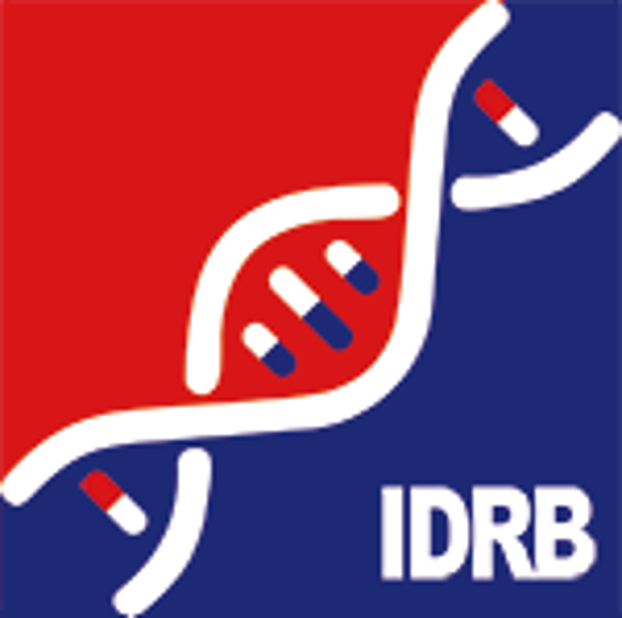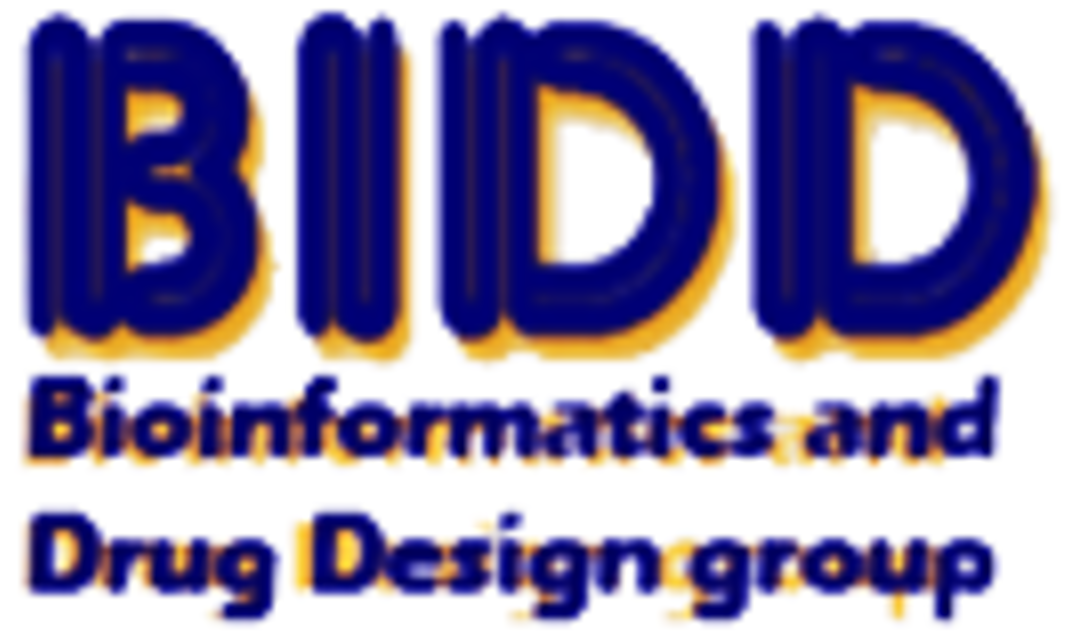Target Information
| Target General Information | Top | |||||
|---|---|---|---|---|---|---|
| Target ID |
T55781
(Former ID: TTDI00012)
|
|||||
| Target Name |
Tyrosine-protein kinase Mer (MERTK)
|
|||||
| Synonyms |
Receptor tyrosine kinase MerTK; Proto-oncogene c-Mer
Click to Show/Hide
|
|||||
| Gene Name |
MERTK
|
|||||
| Target Type |
Clinical trial target
|
[1] | ||||
| Disease | [+] 4 Target-related Diseases | + | ||||
| 1 | Acute myeloid leukaemia [ICD-11: 2A60] | |||||
| 2 | Alzheimer disease [ICD-11: 8A20] | |||||
| 3 | Myelodysplastic syndrome [ICD-11: 2A37] | |||||
| 4 | Solid tumour/cancer [ICD-11: 2A00-2F9Z] | |||||
| Function |
Regulates many physiological processes including cell survival, migration, differentiation, and phagocytosis of apoptotic cells (efferocytosis). Ligand binding at the cell surface induces autophosphorylation of MERTK on its intracellular domain that provides docking sites for downstream signaling molecules. Following activation by ligand, interacts with GRB2 or PLCG2 and induces phosphorylation of MAPK1, MAPK2, FAK/PTK2 or RAC1. MERTK signaling plays a role in various processes such as macrophage clearance of apoptotic cells, platelet aggregation, cytoskeleton reorganization and engulfment. Functions in the retinal pigment epithelium (RPE) as a regulator of rod outer segments fragments phagocytosis. Plays also an important role in inhibition of Toll-like receptors (TLRs)-mediated innate immune response by activating STAT1, which selectively induces production of suppressors of cytokine signaling SOCS1 and SOCS3. Receptor tyrosine kinase that transduces signals from the extracellular matrix into the cytoplasm by binding to several ligands including LGALS3, TUB, TULP1 or GAS6.
Click to Show/Hide
|
|||||
| BioChemical Class |
Kinase
|
|||||
| UniProt ID | ||||||
| EC Number |
EC 2.7.10.1
|
|||||
| Sequence |
MGPAPLPLLLGLFLPALWRRAITEAREEAKPYPLFPGPFPGSLQTDHTPLLSLPHASGYQ
PALMFSPTQPGRPHTGNVAIPQVTSVESKPLPPLAFKHTVGHIILSEHKGVKFNCSISVP NIYQDTTISWWKDGKELLGAHHAITQFYPDDEVTAIIASFSITSVQRSDNGSYICKMKIN NEEIVSDPIYIEVQGLPHFTKQPESMNVTRNTAFNLTCQAVGPPEPVNIFWVQNSSRVNE QPEKSPSVLTVPGLTEMAVFSCEAHNDKGLTVSKGVQINIKAIPSPPTEVSIRNSTAHSI LISWVPGFDGYSPFRNCSIQVKEADPLSNGSVMIFNTSALPHLYQIKQLQALANYSIGVS CMNEIGWSAVSPWILASTTEGAPSVAPLNVTVFLNESSDNVDIRWMKPPTKQQDGELVGY RISHVWQSAGISKELLEEVGQNGSRARISVQVHNATCTVRIAAVTRGGVGPFSDPVKIFI PAHGWVDYAPSSTPAPGNADPVLIIFGCFCGFILIGLILYISLAIRKRVQETKFGNAFTE EDSELVVNYIAKKSFCRRAIELTLHSLGVSEELQNKLEDVVIDRNLLILGKILGEGEFGS VMEGNLKQEDGTSLKVAVKTMKLDNSSQREIEEFLSEAACMKDFSHPNVIRLLGVCIEMS SQGIPKPMVILPFMKYGDLHTYLLYSRLETGPKHIPLQTLLKFMVDIALGMEYLSNRNFL HRDLAARNCMLRDDMTVCVADFGLSKKIYSGDYYRQGRIAKMPVKWIAIESLADRVYTSK SDVWAFGVTMWEIATRGMTPYPGVQNHEMYDYLLHGHRLKQPEDCLDELYEIMYSCWRTD PLDRPTFSVLRLQLEKLLESLPDVRNQADVIYVNTQLLESSEGLAQGSTLAPLDLNIDPD SIIASCTPRAAISVVTAEVHDSKPHEGRYILNGGSEEWEDLTSAPSAAVTAEKNSVLPGE RLVRNGVSWSHSSMLPLGSSLPDELLFADDSSEGSEVLM Click to Show/Hide
|
|||||
| 3D Structure | Click to Show 3D Structure of This Target | AlphaFold | ||||
| HIT2.0 ID | T18T1M | |||||
| Drugs and Modes of Action | Top | |||||
|---|---|---|---|---|---|---|
| Clinical Trial Drug(s) | [+] 7 Clinical Trial Drugs | + | ||||
| 1 | MK-2461 | Drug Info | Phase 1/2 | Alzheimer disease | [1] | |
| 2 | ONO-7475 | Drug Info | Phase 1/2 | Myelodysplastic syndrome | [2] | |
| 3 | INCB81776 | Drug Info | Phase 1 | Solid tumour/cancer | [3] | |
| 4 | MRX-2843 | Drug Info | Phase 1 | Solid tumour/cancer | [4] | |
| 5 | ONO-7475 | Drug Info | Phase 1 | Acute myeloid leukaemia | [5] | |
| 6 | PF-07265807 | Drug Info | Phase 1 | Solid tumour/cancer | [6] | |
| 7 | RXDX-106 | Drug Info | Phase 1 | Solid tumour/cancer | [7] | |
| Mode of Action | [+] 1 Modes of Action | + | ||||
| Inhibitor | [+] 11 Inhibitor drugs | + | ||||
| 1 | MK-2461 | Drug Info | [1] | |||
| 2 | ONO-7475 | Drug Info | [8] | |||
| 3 | INCB81776 | Drug Info | [9] | |||
| 4 | MRX-2843 | Drug Info | [10] | |||
| 5 | ONO-7475 | Drug Info | [5] | |||
| 6 | PF-07265807 | Drug Info | [11] | |||
| 7 | RXDX-106 | Drug Info | [12] | |||
| 8 | G749 | Drug Info | [13] | |||
| 9 | LDC1267 | Drug Info | [14] | |||
| 10 | UNC2025 | Drug Info | [15] | |||
| 11 | UNC569 | Drug Info | [16] | |||
| Cell-based Target Expression Variations | Top | |||||
|---|---|---|---|---|---|---|
| Cell-based Target Expression Variations | ||||||
| Drug Binding Sites of Target | Top | |||||
|---|---|---|---|---|---|---|
| Ligand Name: Gilteritinib | Ligand Info | |||||
| Structure Description | Crystal structure of MerTK kinase domain in complex with Gilteritinib | PDB:7AB1 | ||||
| Method | X-ray diffraction | Resolution | 1.93 Å | Mutation | Yes | [17] |
| PDB Sequence |
SHMEELQNKL
577 EDVVIDRNLL587 ILGRILGEGE597 FGSVMEGNLK607 QEDGTSLKVA617 VKTMSQREIE 632 EFLSEAACMK642 DFSHPNVIRL652 LGVCIEMSSQ662 GIPKPMVILP672 FMKYGDLHTY 682 LLYSRLETGP692 RHIPLQTLLR702 FMVDIALGME712 YLSNRNFLHR722 DLAARNCMLR 732 DDMTVCVADF742 PVKWIAIESL772 ADRVYTSKSD782 VWAFGVTMWE792 IATRGMTPYP 802 GVQNHEMYDY812 LLHGHRLKQP822 EDCLDELYEI832 MYSCWRTDPL842 DRPTFSVLRL 852 QLERLLESLP862
|
|||||
|
|
||||||
| Ligand Name: LY2801653 | Ligand Info | |||||
| Structure Description | Crystal structure of MerTK kinase domain in complex with Merestinib | PDB:7AAY | ||||
| Method | X-ray diffraction | Resolution | 1.87 Å | Mutation | No | [17] |
| PDB Sequence |
SHMEELQNKL
577 EDVVIDRNLL587 ILGKILGEGE597 FGSVMEGNLK607 QEDGTSLKVA617 VKTMKLDNSS 627 QREIEEFLSE637 AACMKDFSHP647 NVIRLLGVCI657 EGIPKPMVIL671 PFMKYGDLHT 681 YLLYSRLETG691 PKHIPLQTLL701 KFMVDIALGM711 EYLSNRNFLH721 RDLAARNCML 731 RDDMTVCVAD741 FGMPVKWIAI769 ESLADRVYTS779 KSDVWAFGVT789 MWEIATRGMT 799 PYPGVQNHEM809 YDYLLHGHRL819 KQPEDCLDEL829 YEIMYSCWRT839 DPLDRPTFSV 849 LRLQLEKLLE859 SLP
|
|||||
|
|
LEU593
4.125
GLY594
3.820
GLU595
3.083
GLY596
4.436
VAL601
3.255
ALA617
3.396
LYS619
2.705
GLU637
3.209
ALA638
4.860
CYS640
3.922
MET641
3.335
PHE644
3.892
VAL649
3.992
ILE650
3.529
|
|||||
| Click to View More Binding Site Information of This Target with Different Ligands | ||||||
| Different Human System Profiles of Target | Top |
|---|---|
|
Human Similarity Proteins
of target is determined by comparing the sequence similarity of all human proteins with the target based on BLAST. The similarity proteins for a target are defined as the proteins with E-value < 0.005 and outside the protein families of the target.
A target that has fewer human similarity proteins outside its family is commonly regarded to possess a greater capacity to avoid undesired interactions and thus increase the possibility of finding successful drugs
(Brief Bioinform, 21: 649-662, 2020).
Human Tissue Distribution
of target is determined from a proteomics study that quantified more than 12,000 genes across 32 normal human tissues. Tissue Specificity (TS) score was used to define the enrichment of target across tissues.
The distribution of targets among different tissues or organs need to be taken into consideration when assessing the target druggability, as it is generally accepted that the wider the target distribution, the greater the concern over potential adverse effects
(Nat Rev Drug Discov, 20: 64-81, 2021).
Biological Network Descriptors
of target is determined based on a human protein-protein interactions (PPI) network consisting of 9,309 proteins and 52,713 PPIs, which were with a high confidence score of ≥ 0.95 collected from STRING database.
The network properties of targets based on protein-protein interactions (PPIs) have been widely adopted for the assessment of target’s druggability. Proteins with high node degree tend to have a high impact on network function through multiple interactions, while proteins with high betweenness centrality are regarded to be central for communication in interaction networks and regulate the flow of signaling information
(Front Pharmacol, 9, 1245, 2018;
Curr Opin Struct Biol. 44:134-142, 2017).
Human Similarity Proteins
Human Tissue Distribution
Biological Network Descriptors
|
|
|
Note:
If a protein has TS (tissue specficity) scores at least in one tissue >= 2.5, this protein is called tissue-enriched (including tissue-enriched-but-not-specific and tissue-specific). In the plots, the vertical lines are at thresholds 2.5 and 4.
|
| Degree | 4 | Degree centrality | 4.30E-04 | Betweenness centrality | 2.96E-04 |
|---|---|---|---|---|---|
| Closeness centrality | 1.95E-01 | Radiality | 1.34E+01 | Clustering coefficient | 0.00E+00 |
| Neighborhood connectivity | 8.25E+00 | Topological coefficient | 2.69E-01 | Eccentricity | 13 |
| Download | Click to Download the Full PPI Network of This Target | ||||
| Chemical Structure based Activity Landscape of Target | Top |
|---|---|
| Drug Property Profile of Target | Top | |
|---|---|---|
| (1) Molecular Weight (mw) based Drug Clustering | (2) Octanol/Water Partition Coefficient (xlogp) based Drug Clustering | |
|
|
||
| (3) Hydrogen Bond Donor Count (hbonddonor) based Drug Clustering | (4) Hydrogen Bond Acceptor Count (hbondacc) based Drug Clustering | |
|
|
||
| (5) Rotatable Bond Count (rotbonds) based Drug Clustering | (6) Topological Polar Surface Area (polararea) based Drug Clustering | |
|
|
||
| "RO5" indicates the cutoff set by lipinski's rule of five; "D123AB" colored in GREEN denotes the no violation of any cutoff in lipinski's rule of five; "D123AB" colored in PURPLE refers to the violation of only one cutoff in lipinski's rule of five; "D123AB" colored in BLACK represents the violation of more than one cutoffs in lipinski's rule of five | ||
| Co-Targets | Top | |||||
|---|---|---|---|---|---|---|
| Co-Targets | ||||||
| Target Poor or Non Binders | Top | |||||
|---|---|---|---|---|---|---|
| Target Poor or Non Binders | ||||||
| Target Regulators | Top | |||||
|---|---|---|---|---|---|---|
| Target-regulating microRNAs | ||||||
| Target Profiles in Patients | Top | |||||
|---|---|---|---|---|---|---|
| Target Expression Profile (TEP) |
||||||
| Target Affiliated Biological Pathways | Top | |||||
|---|---|---|---|---|---|---|
| NetPath Pathway | [+] 1 NetPath Pathways | + | ||||
| 1 | TSH Signaling Pathway | |||||
| Reactome | [+] 1 Reactome Pathways | + | ||||
| 1 | Cell surface interactions at the vascular wall | |||||
| WikiPathways | [+] 1 WikiPathways | + | ||||
| 1 | Cell surface interactions at the vascular wall | |||||
| References | Top | |||||
|---|---|---|---|---|---|---|
| REF 1 | MK-2461, a novel multitargeted kinase inhibitor, preferentially inhibits the activated c-Met receptor. Cancer Res. 2010 Feb 15;70(4):1524-33. | |||||
| REF 2 | ClinicalTrials.gov (NCT03176277) A Study of ONO-7475 in Patients With Acute Leukemias. U.S. National Institutes of Health. | |||||
| REF 3 | ClinicalTrials.gov (NCT03522142) A Study Exploring the Safety and Tolerability of INCB081776 in Participants With Advanced Malignancies. U.S. National Institutes of Health. | |||||
| REF 4 | ClinicalTrials.gov (NCT03510104) Pharmacokinetic and Safety Study of MRX-2843 in Adults With Relapsed/Refractory Advanced and/or Metastatic Solid Tumors. U.S. National Institutes of Health. | |||||
| REF 5 | Clinical pipeline report, company report or official report of the Pharmaceutical Research and Manufacturers of America (PhRMA) | |||||
| REF 6 | ClinicalTrials.gov (NCT04458259) A Study of PF-07265807 In Participants With Advanced or Metastatic Solid Tumors. U.S. National Institutes of Health. | |||||
| REF 7 | ClinicalTrials.gov (NCT03454243) Oral Immunomodulatory Tyrosine Kinase Inhibitor in Patients With Locally Advanced or Metastatic Solid Tumors (TITAN). U.S. National Institutes of Health. | |||||
| REF 8 | Clinical pipeline report, company report or official report of Ono Pharmaceutical. | |||||
| REF 9 | A Potent and Selective Dual Inhibitor of AXL and MERTK Possesses Both Immunomodulatory and Tumor-Targeted Activity. Front Oncol. 2020 Dec 7;10:598477. | |||||
| REF 10 | The MERTK/FLT3 inhibitor MRX-2843 overcomes resistance-conferring FLT3 mutations in acute myeloid leukemia. JCI Insight. 2016 Mar;1(3):e85630. | |||||
| REF 11 | National Cancer Institute Drug Dictionary (drug name PF-07265807). | |||||
| REF 12 | National Cancer Institute Drug Dictionary (drug name RXDX106). | |||||
| REF 13 | G-749, a novel FLT3 kinase inhibitor, can overcome drug resistance for the treatment of acute myeloid leukemia. Blood. 2014 Apr 3;123(14):2209-19. | |||||
| REF 14 | The E3 ligase Cbl-b and TAM receptors regulate cancer metastasis via natural killer cells. Nature. 2014 Mar 27;507(7493):508-12. | |||||
| REF 15 | MerTK as a therapeutic target in glioblastoma. Neuro Oncol. 2018 Jan 10;20(1):92-102. | |||||
| REF 16 | UNC569, a novel small-molecule mer inhibitor with efficacy against acute lymphoblastic leukemia in vitro and in vivo. Mol Cancer Ther. 2013 Nov;12(11):2367-77. | |||||
| REF 17 | A-loop interactions in Mer tyrosine kinase give rise to inhibitors with two-step mechanism and long residence time of binding. Biochem J. 2020 Nov 27;477(22):4443-4452. | |||||
If You Find Any Error in Data or Bug in Web Service, Please Kindly Report It to Dr. Zhou and Dr. Zhang.

